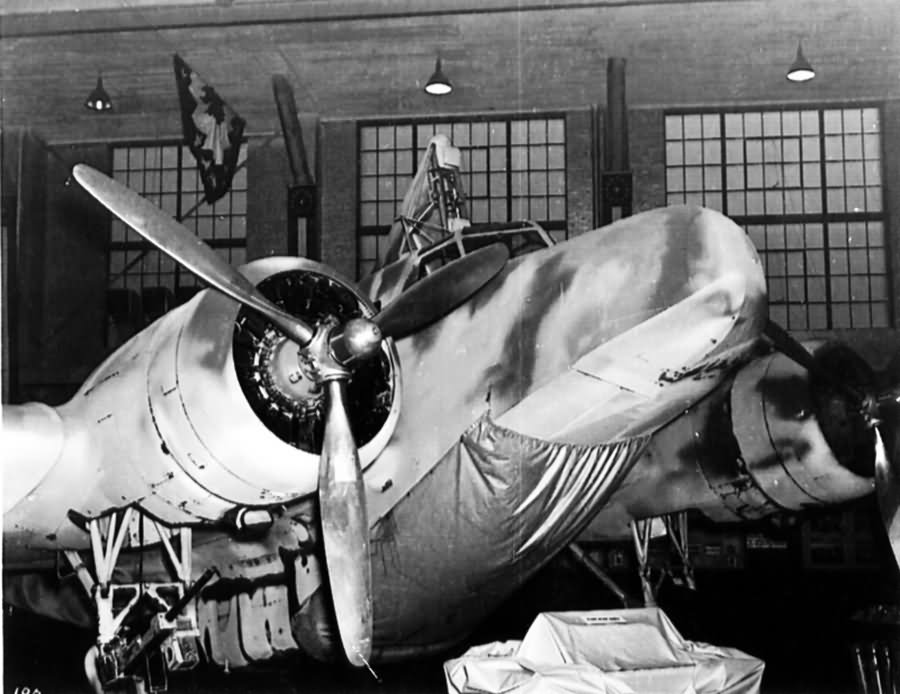The exploration of integrating large-caliber cannons into aircraft began to gain traction in the mid-1930s, despite initial resistance from military planners who had previously decided in 1932 that .50 caliber would be the standard for aircraft armament, with no funds allocated for larger weapons. This stance began to shift in December 1935, when the Chief of Ordnance ordered tests at Aberdeen Proving Grounds to evaluate the effectiveness of high-explosive, instantaneous-fused projectiles in various calibers, including 37mm, 25mm, 20mm, and .50 inch. The results of these tests prompted the Air Corps Technical Committee to reconsider the role of larger caliber cannons in aerial combat, leading to the development of specifications for aircraft cannons.
Throughout 1936, the U.S. military explored the possibility of acquiring foreign-made cannons, but these efforts were stymied by bureaucratic hurdles, high costs, and unsatisfactory conditions of sale. By March 1938, it became evident that there was a genuine demand for an aircraft cannon, but that foreign procurement was not feasible. Consequently, the Ordnance Committee recommended the development of a 75mm semi-automatic cannon capable of firing high-explosive shells at a velocity of 1,500 to 2,000 feet per second.
A key milestone in this development occurred on November 1, 1938, when a meeting at Wright Field in Dayton, Ohio, between the Air Corps and the Ordnance Committee, led to the decision to test the feasibility of mounting a 75mm cannon on an aircraft. The DB-1 prototype, the precursor to the B-18 Bolo bomber, was selected for this experiment. It was fitted with a fixed, forward-firing 75mm Model 1897 cannon, with a shortened muzzle, installed in the forward bomb bay. Following static tests at Wright Field, the aircraft was slated to be transferred to Aberdeen Proving Ground for further evaluation. However, due to concurrent radio tests being conducted on the aircraft, it wasn’t available for Aberdeen tests until April or May 1939. Instead, a production model B-18 from Langley, Virginia, was transferred to Aberdeen for the trials.
At Aberdeen, the B-18 was outfitted with the 75mm cannon and a basic fire control system in an improvised experimental setup. The goal was to gather data on the accuracy and effectiveness of the weapon system in hitting both ground and aerial targets, and to evaluate the potential for a future military application of the cannon. The cannon, mounted in the forward bomb bay with limited elevation and traverse, was paired with a telescopic sight and range finder. Initial tests were conducted on the ground before moving to in-flight tests, targeting both aerial and ground targets.
The results of these tests exceeded expectations. The primary concern had been whether the B-18’s fuselage could withstand the stress of firing such a large weapon in flight, but the aircraft structure and mounting proved resilient, showing no significant adverse effects. The basic stereo telescopic sight used in the tests proved to be an accurate range finder, allowing the cannon to be fired with notable precision. At a distance of 3,000 yards, the average error was only 50 feet, and this improved to 35 feet at 1,500 yards.
The success of the B-18 tests demonstrated that mounting a 75mm cannon on an aircraft was viable from both engineering and tactical perspectives. However, it also highlighted the need for the development of a new 75mm cannon and a more sophisticated fire control system, rather than simply improving the existing ones. As a result, the joint Air Corps and Ordnance Committee recommended the immediate commencement of development for the new cannon and fire control system. Additionally, the Air Corps was advised to begin designing and manufacturing an aircraft specifically to mount this new weapon, with the aim of having it ready by the fiscal year 1942.
The lessons learned from the B-18’s 75mm cannon tests would later inform further developments, including the testing of the 75mm cannon on the XA-26B. This aircraft would eventually carry the newly developed 75mm M3 cannon, which had originally been designed for tanks, though it was later replaced by the lighter T9 cannon. These advancements marked significant progress in the integration of heavy armament into U.S. military aircraft, contributing to the tactical capabilities of the Air Corps as World War II loomed on the horizon.
